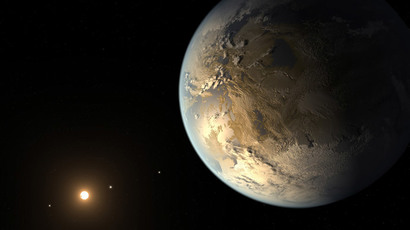NASA wants greenhouse on Mars by 2021

NASA researchers have proposed depositing a small greenhouse on Mars when the next rover bound for the Red Planet is expected to land in 2021. Experimenting with plant life is another step in the process of establishing human colonization of Mars.
The Mars Plant Experiment (MPX) would be a self-contained project, NASA scientists say, closed off from the atmosphere on Mars as to not allow any possibility that the plant life could escape.
"In order to do a long-term, sustainable base on Mars, you would want to be able to establish that plants can at least grow on Mars," MPX deputy principal investigator Heather Smith, of NASA's Ames Research Center, said in late April at the Humans 2 Mars conference in Washington, DC. “This would be the first step in that…we just send the seeds there and watch them grow."
MPX would affix a clear “CubeSat” box - a case for a small satellite - on the outside of the rover, set to launch in 2020. The box would contain Earth air and around 200 seeds of Arabidopsis, a small flowering plant commonly used in scientific studies.
The seeds would be watered upon the rover’s arrival on Mars. Then they would have about two weeks to grow.
"In 15 days, we'll have a little greenhouse on Mars," Smith said.
MPX would be a test-run for organisms on Mars amid the planet’s high radiation levels and low gravity – about 40 percent of that on Earth, she said.
"We would go from this simple experiment to the greenhouses on Mars for a sustainable base," Smith said. "That would be the goal."
While long-range research is the top goal, the temporary greenhouse life would provide a first for humanity’s space efforts.
"It also would be the first multicellular organism to grow, live and die on another planet," Smith said.
The 2020 rover is based on NASA’s previous Curiosity rover, which proved not long after its August 2012 landing that the Red Planet is capable of supporting microbial life.
The 2020 rover will search for past life on Mars while it collects rock and soil samples to bring back to Earth, space.com reported.
After receiving 58 proposals for what instruments the rover should carry for the mission, NASA will make its final hardware selection by June, NASA officials have said. Curiosity carries 10 instruments, and the 2020 rover will likely have about the same amount, according to space.com.














